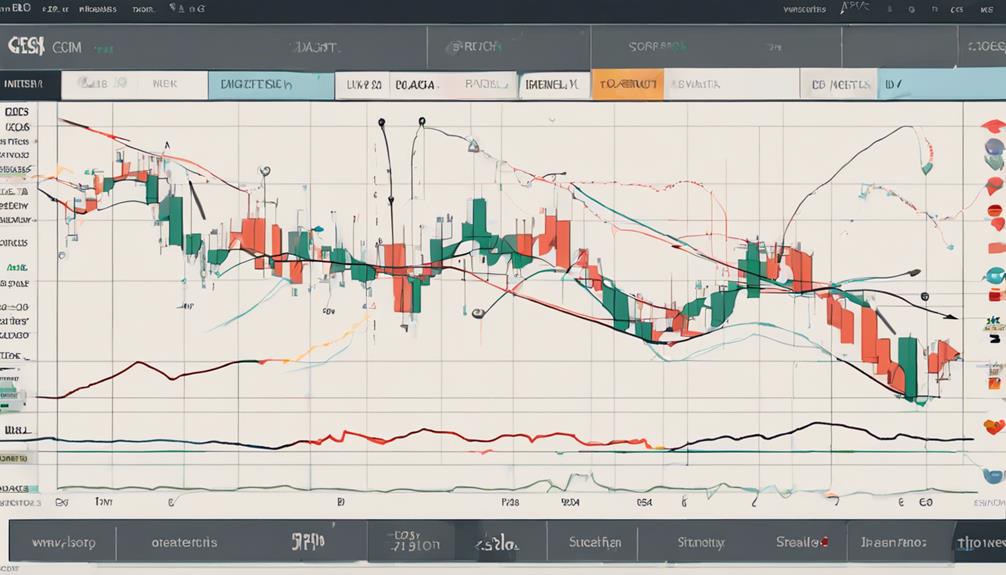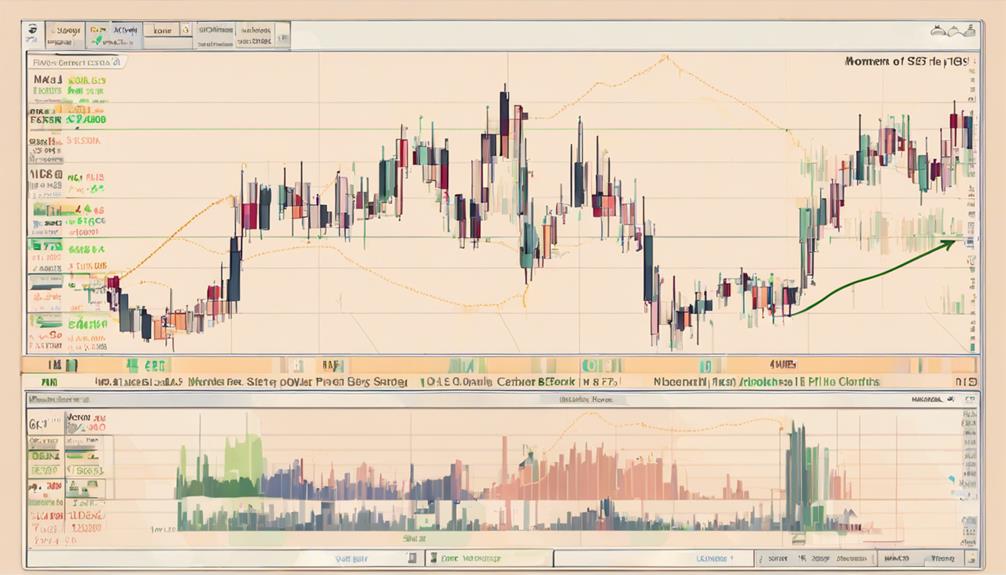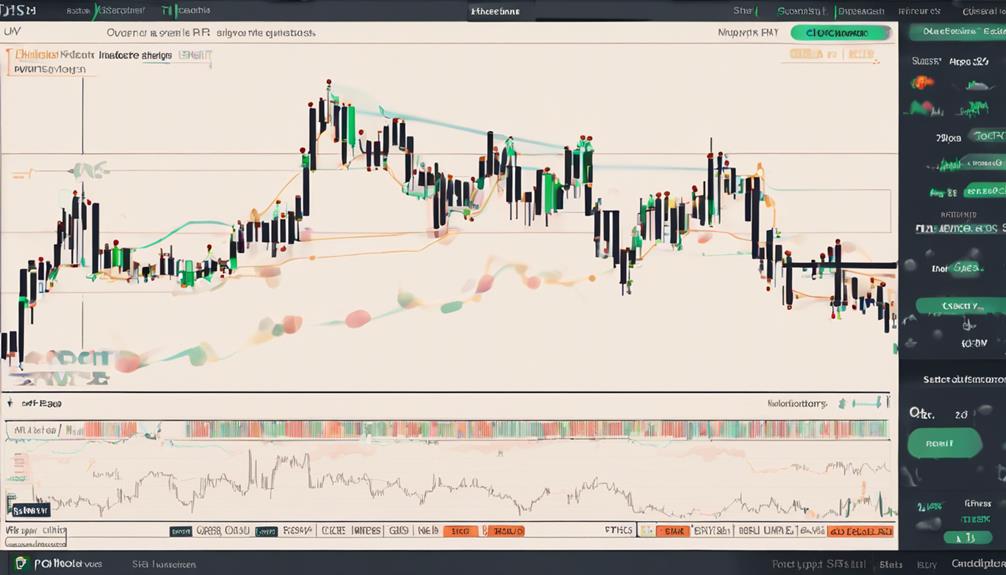In swing trading, understanding momentum indicators is key to navigating market dynamics with finesse. Have you ever wondered how these indicators can provide valuable insights into potential market movements?
By grasping the nuances of momentum indicators like RSI and Stochastic Oscillator, you can gain a deeper understanding of market trends and crucial entry/exit points. Mastering these tools can be the differentiator between a successful swing trader and one who struggles to keep up with market shifts.
Stay tuned to unravel the significance of momentum indicators in your trading strategy.
Understanding Momentum Indicators
Understanding Momentum Indicators is essential for grasping the speed and strength of price movements in swing trading. In this context, momentum indicators like the Relative Strength Index (RSI) and the Stochastic Oscillator play a vital role.
They not only help traders identify potential trend reversals but also confirm the direction of the market trend. By providing overbought and oversold signals, these indicators assist traders in making well-informed decisions regarding entry and exit points.
Being able to interpret these indicators accurately is crucial for maximizing profitability and minimizing risks in swing trading strategies. Therefore, mastering the understanding of momentum indicators is key to navigating the complexities of market movements effectively.
Types of Momentum Indicators

Momentum indicators in swing trading play a crucial role in assessing the strength and speed of price movements. Traders rely on indicators like the Relative Strength Index (RSI), Stochastic Oscillator, and Rate of Change Indicator to gauge momentum and identify potential trend reversals.
These tools offer insights into overbought or oversold conditions, indicating when a market might be due for a reversal. By understanding these indicators, traders can confirm the momentum of existing trends and make informed trading decisions in the dynamic world of swing trading.
Recognizing these signals is vital for navigating the market efficiently and strategically, helping you stay ahead of the curve and capitalize on profitable opportunities.
Application of Momentum Indicators

In swing trading, incorporating momentum indicators such as the Relative Strength Index (RSI) and Stochastic Oscillator is pivotal for pinpointing favorable entry and exit points based on market conditions and trend strength.
The RSI helps identify overbought (above 70) and oversold (below 30) conditions, signaling potential trend reversals. On the other hand, the Stochastic Oscillator compares closing prices to price ranges, providing buy/sell signals in response to market conditions.
Importance in Swing Trading

Why is the significance of momentum indicators in swing trading often underestimated by novice traders? Here are some reasons why these indicators play a crucial role:
- Identifying Trend Strength: Momentum indicators help you gauge the strength of price movements, giving you insights into the intensity of market trends.
- Timing Entry/Exit Points: Indicators like RSI and Stochastic Oscillator are essential for determining optimal entry and exit points in swing trading strategies.
- Spotting Overbought/Oversold Conditions: They assist in identifying when assets are overbought or oversold, aiding in decision-making processes.
- Maximizing Profit Potential: Understanding momentum indicators is key to effectively managing trades, maximizing profit potential, and making informed decisions in swing trading scenarios.
Best Practices for Using Momentum Indicators

Utilizing momentum indicators effectively in swing trading requires a keen understanding of their nuances and strategic application. When using indicators like the Relative Strength Index (RSI) and Stochastic Oscillator, it's best to consider price movements and key levels such as overbought and oversold conditions.
RSI values above 70 indicate overbought levels, suggesting a potential reversal, while values below 30 signal oversold conditions, indicating a possible buying opportunity. The Stochastic Oscillator helps identify overbought and oversold conditions by comparing closing prices to price ranges.
How Do Momentum Indicators in Swing Trading Differ from Volatility Indicators?
Momentum indicators in swing trading focus on the strength of price movements over a specific time period, helping traders identify potential trend reversals. On the other hand, navigating volatility indicators stepbystep is crucial to assess the magnitude of price fluctuations, aiding in risk management and entry/exit decisions. Both serve different purposes in guiding trading strategies.
Frequently Asked Questions
What Is the Best Momentum Indicator?
For swing trading, the best momentum indicator varies based on your trading style and preferences. Dive into Relative Strength Index (RSI), Stochastic Oscillator, and Rate of Change Indicator to find what suits you best.
What Are the Best Indicators for Swing Trading?
When swing trading, focus on indicators like RSI and Stochastic Oscillator to spot overbought and oversold conditions. These tools are vital for confirming trends, pinpointing entry/exit points, and maximizing your trading strategy's success.
What Is the Best MACD Setting for Swing Trading?
For swing trading, the default MACD setting of 12, 26, 9 is optimal. It combines short and long-term EMAs with a signal line to pinpoint trend shifts. Traders frequently use the MACD histogram for clearer analysis. Adjusting settings can be done but defaults are popular.
What Is the Best Momentum Reversal Indicator?
When looking for a momentum reversal indicator in swing trading, consider the Relative Strength Index (RSI). RSI values above 70 signal overbought conditions, while values below 30 indicate oversold conditions. Monitor RSI for potential trade opportunities.
Conclusion
In conclusion, momentum indicators are essential tools in swing trading, providing valuable insights into market trends and potential reversals.
Did you know that over 70% of successful swing traders rely on momentum indicators to make informed trading decisions?
By incorporating these indicators into your strategy and following best practices, you can enhance your trading performance and increase your chances of success in the dynamic world of swing trading.


